Trot outs – practice makes perfect
| December 10, 2014 | Posted by Melinda under Uncategorized |
I came across this picture of Farley and I doing a trot out during her first season.
Oh boy have we come a long ways!
What I love best is how she has subtly positioned her body so that although she is trotting forward, every line of her body is pointing BACKWARDS.
Yes, we’ve gotten a little better. Six years later we have a solid trot out that, while not particularly spactacular, get’s the job done.
Practice really *does* makes perfect. I estimate there’s about 22 rides and over 100 “official” trot outs between the two photos. And countless hours of running together on a leadline, and yes – actually practicing the trot out mechanics in an arena.
(Update Oct 2019 – an extended trot out how-to was included the book “Go Ride Far.” Go check it out!)
———————————————————————————————————
Do you see it too or am I just crazy?
Isn’t it funny how sometimes you will catch something out of the corner of your eye that dissapears when you look at it straight on? I bought Farley as a full grown adult. I didn’t expect to look back and be suprised how young she looked when we first started. She wasn’t a baby or even a particularly young horse at seven years old. But lately, looking at my arab that is quite substantial with lot of bone, I often wonder if it was my imagination that the adjective “scawny” fit her better back then than “solid”. Beyond the obvious muscle and conditioning, did she *really* put on more bone? Did she *really* get wider and more substantial?
As I flip through pictures of our first year together, I just can’t quite shake the feeling that in more ways than just the usual age related changes (head shape changes as the teeth grow out, a bigger belly) she looks like a different horse now. How influential was endurance in shaping what she looks like today? Or was this the “normal” progression and she was always destined to be a little more substantial at 16 years than she was at 7 years?
Has more changed than just the trot out? Or am I beling fooled by camera angles and a bit of muscle?
What I posted….
One year ago: The best bedtime story
Three years ago: My desk
Four years ago: Friends







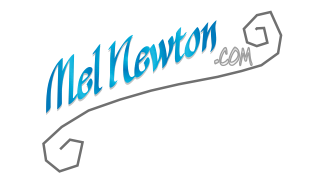
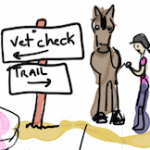
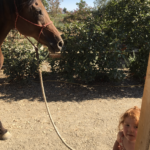
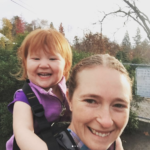
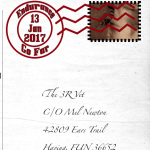






Filling out, bulking up does seem to occur later in some horses. I know Tom’s gelding Brego was looking rather greyhoundish last March when I started him over fences. We rode him alot during the summer. By July, i noticed he was filling in. By September, I would have to look twice at him out in the pasture. I was in awe at the difference. It was like someone had come in during the night , stole Brego and replaced him with his older brother Roman. Brego is 8 years old . I do know that the pounding on the joints that comes with excercise does help thicken bone. I want to say Dr Deb Bennett might have some info about that? . I wonder however, if there is a “window” of time that this can occur in regards to age of the horse and once you get past this age, it won’t help?
No I don’t think you’re fooling yourself. Joe is now 9 and is STILL changing shape and filling out. Someone made the comment to me this season that “he looks like an athlete now, not a pony”. This is after 3 solid seasons of endurance.
The first thing I thought when I saw the very first picture was “woah, Farley looks so much more substantial now.”
YAY ride ‘n tie!
Oh cool! then it probably isn’t just my imagination.
I agree with Funder. She looks hurkier, and also more tuned in. Cool that it shows up in pictures!
My mare has almost gotten us pulled twice due to a poor trot out. At my first ride, I didn’t realize it was even something that needed to be taught (I was green and stupid) and when she just stumbled along behind me refusing to go faster than was absolutely necessary, the vet asked for us to present again at the end of the hold. Thankfully she moved a little better afterward and we went on to complete. I had my next ride 3 weeks later and I spent those three weeks teaching her to trot out.
I agree that you need to set them up. I always stand beside her, make her stand perfectly still, then I say “Ready? Lets Trot!” And off we go. When I was teaching her I would stop the moment she trotted 2 steps and praise her. Lather, rinse, repeat with longer and longer distances. We trotted out wonderfully at the next ride.
She still isn’t great at it. She is very “Efficient” with everything she does. You won’t ever see her bounding down the vetting lane, but you wont see her being pulled along by me anymore either. It is a very important skill and one I take the time to reinforce frequently.
Sara, long ago a vet pulled me aside and asked me to trot out somebody else’s horse for her. The rider was so tired and discouraged that she was making the horse look tired, discouraged, and LAME.
“What if I am tired, discouraged, and lame?” I asked.
“Fake being perky,” he told me. “Sing that dumb song you always sing at the trot out as if you aren’t a bit tired. Your horse isn’t smart enough to know the difference, and he will think he’s not a bit tired, too.”
Huh. Whaddya know? It works.
That’s a great point. I go crewless, so by the time a hold comes around late in the ride I am a stumbly tired rider who just wants to sit down for a minute. I’m sure the mare picks up on that. She reads me like a book and definitely takes her cues from me.
OK folks – here’s an awesome article that teaches you how to trot out a horse for an endurance vet check 🙂
http://haikufarm.blogspot.com/2011/11/in-which-endurance-101-teaches-you-how.html?m=1
So are you going to give away the answers at some point, as to what is “wrong” in the earlier trot-out? I have a green mare I need to teach to trot out, but having only attended rides as a volunteer, I’ve never actually done one (though I’ve watched quite a few!).
My comments are:
You’re beside her instead of in front of her
You’re looking at her instead of ahead of both of you
Your right hand MIGHT be putting up some blockage toward forward movement, hard to tell…
I’d love to hear the right way to do (and teach!) trot-outs, if you can cover that here or recommend resources. Thanks!
Good point! I didn’t spell them out, but I probably need to. The biggest errors are:
1. Looking at my horse as I ask them to trot out
2. Tension on the rope
3. Not shown in the picture but can be inferred – Did not “set the horse up” prior to the trot up. The set up is a cue that tells the horse “we are going to move forward”. What I see in her body language is that she was suprised by the request and wasn’t ready, and a lack of understanding of what we were going to do. A “set up” prior to the actual trot out would prepare the horse, and help eliminate that “WHAAAA? expression on the horse’s face, as well as the “backwards” lean.
On the point of me being beside the horse (instead of in front). I prefer this for 2 reasons
1. It gives the vet a better view of my horse, especially coming back towards them after the turn.
2. The horse is less likely to pick up on a body cue from me and do stride adjustments that make them look lame. Besides me she has the freedom to go a bit faster or a bit slower if I make a mistake on my running speed. Behind me, she has to adjust in order to keep behind me. It’s hard to see in the bottom trot out picture because of the angle of the photograph but I’m at her shoulder just like in the first one – but there is more lateral distance bewteen us.
I don’t think of a trot out as a leading exercise – I think of it as a skill that I cue – just like I would cue any other sort of movement. I teach the parameters and guidelines, and then once it is taught, and I give the cue – I expecct them to execute it with the minimum of micromanaging from me. When we lead in hand, the box she is suppose to stay in is behind me. When I tail her up a hill, the box is in front of me. During a trot out, the box is beside me. Not everything I do from the ground with leadline in hand is considered “leading”, just like under saddle a horse can learn that there are different cues for different gaits – just because you teach a horse that they can canter *sometimes* doesn’t mean they get to canter *all* the time when ever the feel like it. Same for my relative postiion to her – just because her box is in front of me *sometimes* doesn’t mean she picks the box she wants to be in *all the time*. Make sense?
So, in teaching the trot out I work on the set up (this set of actions means we are about to trot out, so be ready), the criteria (I want a trot, and I want it in this narrow range of speed because you look best there), the position (our shoulders at the same level) and the execution: trot in a straight line, turn like this, trot back in a straigh line, calm halt.
In a very selfish way, I like having her a little out in front of me during the trot out because I can be looking straight ahead and still see what she’s doing out of the corner of my eye.
BTW – my biggest error in the second picture (the more recent one) is that I’m staring at the ground – I should be looking where I am going!
Wanna know another difference between the pics “back then ” and “now”? In almost every single older picture I have, Farley is staring into the distance, beyond me. Now, she’s staring into the camera towards me. If I can convince her to look somewhere else, then she’s invariable looking at something like food or something “in her immediate present”. No longer does she stare into the distance and strike the “classic contemplative arab” pose. I don’t really know when that switch happened but I think it coincided about the time we rode our first 100 together. Crazy.